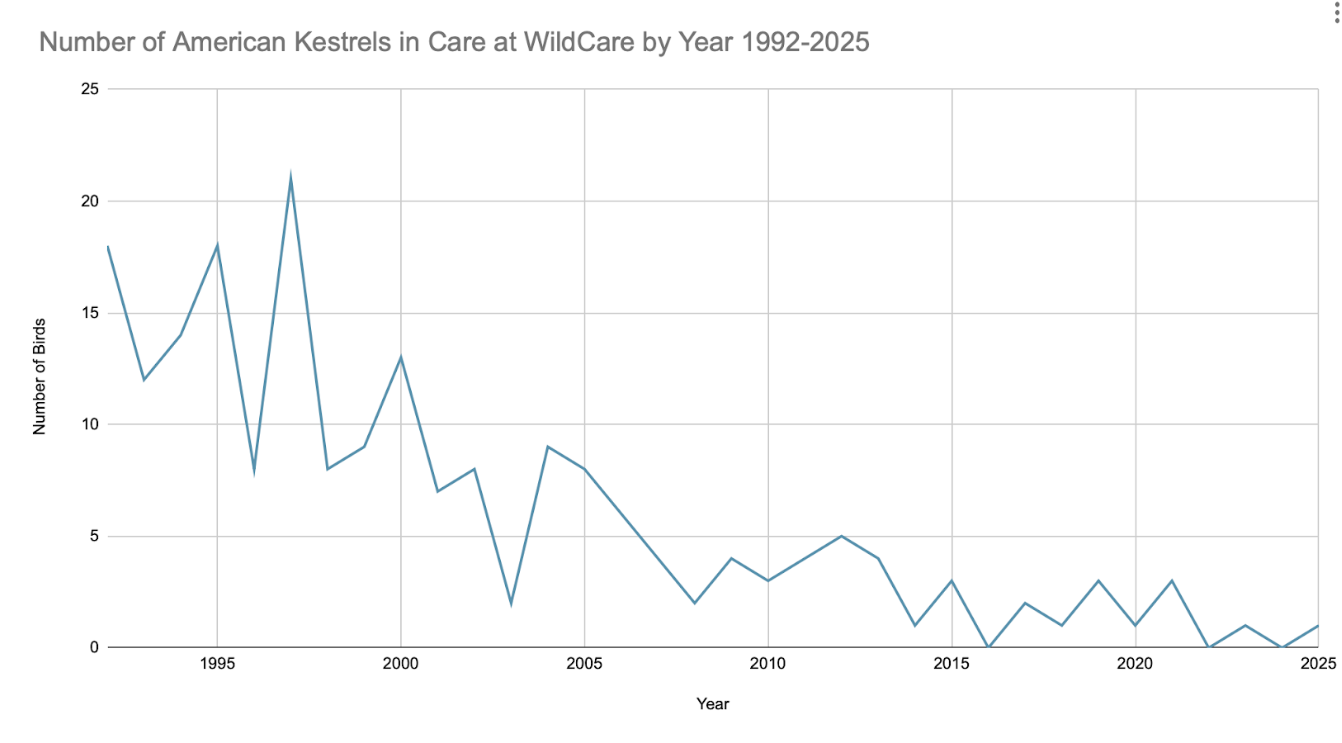Grounded American Kestrel
American Kestrels are the smallest North American falcons. Unlike many birds, they are sexually dimorphic; males have blue-gray wings and a reddish tail with a single black band on the feather tips, while females have reddish wings and a reddish tail whose feathers are striped with multiple black stripes.
While they are listed as a species of "least concern" by the International Union for Conservation of Nature, their numbers have been declining throughout North America. Since 1968, the kestrel population of coastal California is estimated to have declined by 69%. The reason for their population decline is unknown, but it is likely due to a combination of habitat loss and environmental toxins.
Photo by Aviva Rossi
In fact, this patient was the first kestrel admitted to WildCare since 2023. We have seen a dramatic decline in the numbers of kestrels admitted for care over the past 30 years.
While we would love to believe the reason is that they are simply staying out of trouble and not getting injured, we know that isn't the case and we believe our decline in kestrel patients is a reflection of the overall decline in local population.

